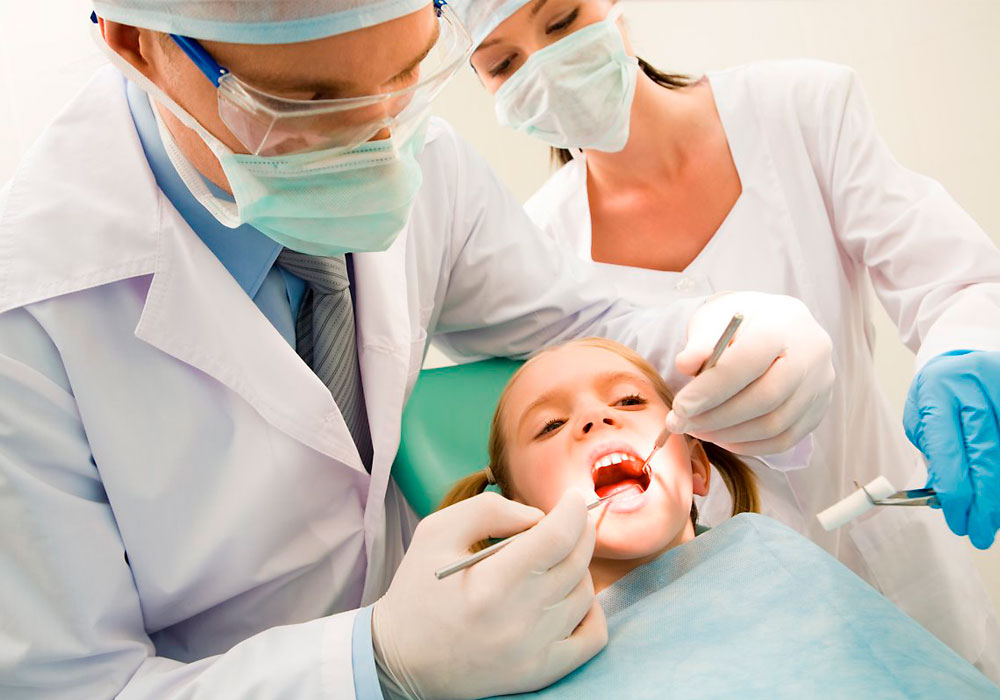Ask a Pediatric Dentist: Does My Child Need Sedation?

It can be hard enough getting your child to the dentist’s office, let alone having them sit calmly in a chair for an exam. While part of this difficulty may stem from a bad temper, your child may also genuinely suffer from dental anxiety. Even kids who have great relationships with their pediatric dentist can become frightened once they’re seated in the dental chair. Rather than punish children for their fears, pediatric dentists are facing the problem head-on with caring communication and new dental techniques.
Dental sedation is a tool that pediatric dentists often use to help calm their patients before a procedure. It can be used for minor operations like dental exams or invasive procedures like tooth extractions. Even children without dental anxiety can benefit from sedation. For example, many patients choose some form of sedation when they need to get multiple wisdom teeth removed.
At Kids Healthy Teeth in Katy, TX, we want our patients and their parents to understand what exactly dental sedation is and what to expect when they come into the office. While sedation is a safe procedure, we understand that parents may be worried. To shed some light on the topic, our talented pediatric dentists are answering common questions about dental sedation today!
Why would my child need sedation?
Certain dental procedures can be painful or scary to children and even adults! Even with the use of anesthesia, it’s not uncommon for patients to tense up and react aggressively during a dentist’s appointment if they feel anxious. Dental sedation eases the patient’s nerves, allowing the pediatric dentist to operate without difficulty.
Dental sedation usually isn’t offered for routine care, such as dental exams or dental cleanings. The most common procedures that patients and parents request dental sedation for are:
- Tooth extractions
- Root canals
- Deep dental fillings
More people are sedated during these procedures because they are more invasive than others.
Children who have sensitive dental nerves, phobia of the dentist, or general anxiety are good candidates for sedation dentistry. With that being said, it is optional. If your child can stay calm and collected during the dentist’s appointment, they definitely don’t have to go under sedation if they don’t want to!
What types of sedation are used in dentistry?
Most dentists use one of the following procedures to administer sedation dentistry. Nitrous oxide, enteral sedation, and IV sedation are forms of conscious or “awake” sedation whereas general anesthesia will put your child to sleep throughout the procedure.
Nitrous oxide or laughing gas
A form of sedation dentistry that you may have heard of already is nitrous oxide or laughing gas. With this method, the pediatric dentist lets the patient inhale a combination of nitrous oxide and oxygen gas through a mask to prevent gagging, pain, and apprehension. This method of sedation is often used in combination with local anesthetics to make the experience as smooth and easy as possible. Patients who choose nitrous oxide will remain awake through the operation and they will retain all their normal reflexes.
Enteral sedation
Enteral sedation results in similar effects as nitrous gas, but it is administered orally with a pill or liquid.
Intravenous (IV) sedation
As the name suggests, IV sedation is administered by injecting a sedative into the veins. Because the sedative is placed directly into the bloodstream, the effects are immediate. This sedation dentistry is a little stronger than nitrous oxide or enteral sedation. Patients will be conscious during the procedure, but they may feel groggy afterward.
General anesthesia
For patients who are extremely finicky or scared of the dentist, general anesthesia may be the best option. General anesthesia will put the patient to sleep throughout the entire operation. It can be administered both intravenously and with gas. Patients may need extra time in the office to recover.
Because all these types of sedation can affect the senses, a designated driver is usually needed to take patients home once the appointment is over.
Is sedation dentistry safe?
Yes, sedation dentistry is safe! As long as your child meets the dentist’s requirements and follow directions properly, there should be no problem.
Before the appointment, get your child’s medications approved by the pediatric dentist. The drugs in the medication could react badly with the chemicals used in sedation dentistry if you don’t notify the pediatric dentist. When the doctor has information about your child’s medical history and medications, they can use sedation medication that is catered to your child’s needs.
On the day of the procedure, make sure your child has proper supervision. Side effects of sedation may include light-headedness, dizziness, tiredness, nausea, and headache, so you’ll want to have someone watch over your child during and after the appointment. We recommend giving your child time to rest and recover once the procedure is over.
Sedation dentistry is usually used in conjunction with an anesthetic gel or injection. The sedation medication calms patients and the anesthetic eliminates pain. Let us know if your child has any allergies to anesthesia or sedatives! If you think your child could benefit from sedation dentistry, give us a call! It is completely safe, painless, and effective under the supervision of a licensed and trained pediatric dentist. We will make sure to explain the process clearly to your child, so they know what’s to come.
Fear of the dentist can irreparably damage the teeth and gums. It can lead children to avoid the dentist, causing their oral health to decline. Our friendly Child Dentist in Katy and fun office should be a place where your child feels safe and comfortable. With sedation dentistry, it can be, even for scary procedures like gum grafting and tooth extractions! For more information about this topic, head over to our Sedation Information page or give us a call!
